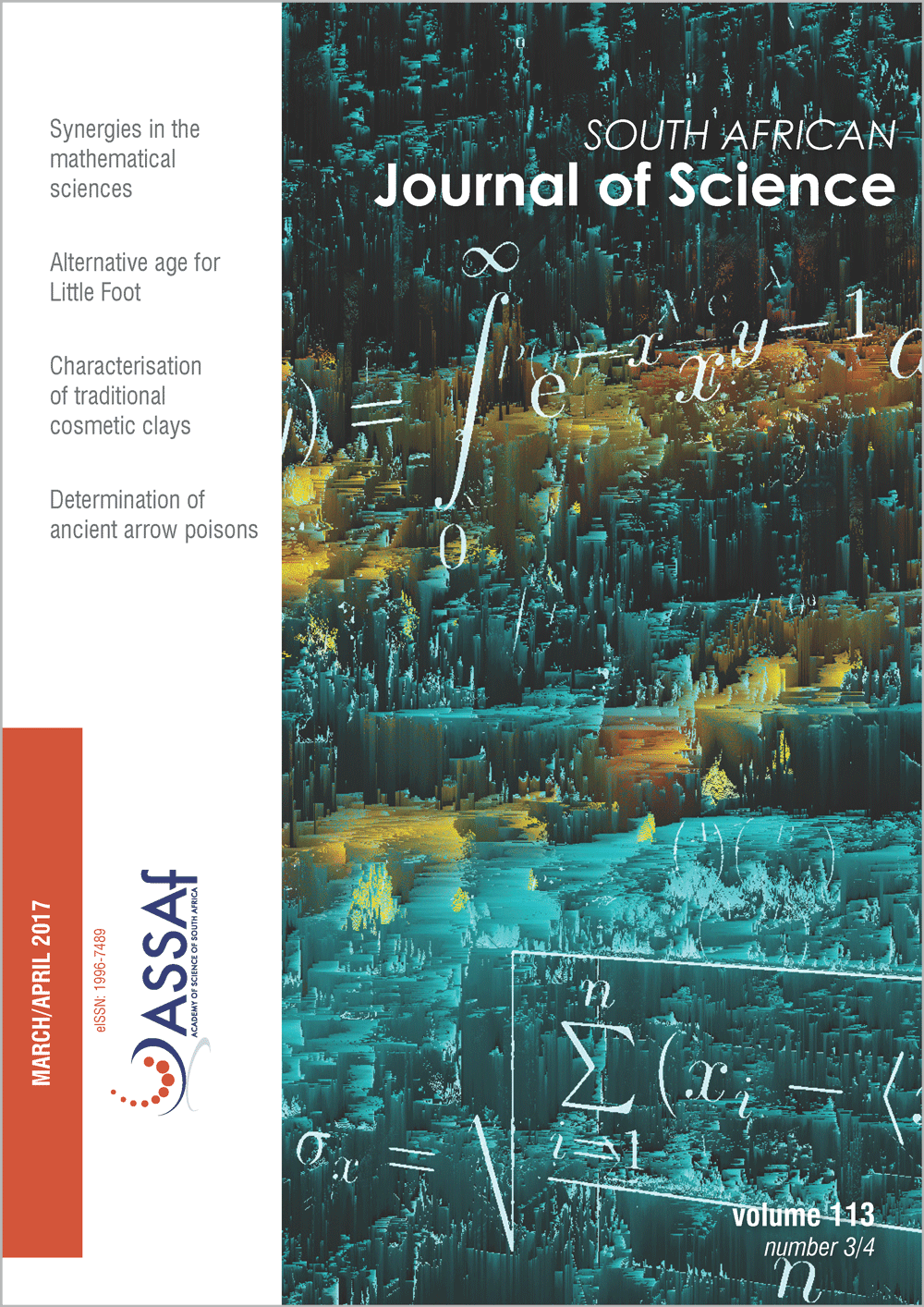Mycotoxigenic Fusarium species associated with grain crops in South Africa – A review
DOI:
https://doi.org/10.17159/sajs.2017/20160121Keywords:
cereals, food safety, fungal contamination, mycotoxins, phytopathologyAbstract
Cereal grains include some of the most important crops grown in South Africa and play a major role in the local economy. Maize, wheat and sorghum are extensively consumed by humans and farm animals, and are also utilised in industrial processes. Grain crops that are grown commercially contribute up to 33% of the country’s total gross agricultural production, whereas subsistence farmers grow grains mainly to sustain their families. In rural communities an average intake of maize grain of more than 300 g dry weight per person per day is not uncommon. The production of grains is often constrained by pests and diseases that may reduce their yields and quality. In South Africa, 33 mycotoxin-producing Fusarium species have been associated with grain crops. Mycotoxins, such as fumonisins and deoxynivalenol, have been found in levels exceeding the maximum levels imposed by the US Food and Drug Administration and the European Union and therefore pose a serious public health concern. We provide an extensive overview of mycotoxigenic Fusarium species associated with grain crops in South Africa, with particular reference to maize, wheat and sorghum.
Significance:- Mycotoxigenic Fusarium species negatively affect the most important staple food crops grown in South Africa.
- Mycotoxin contamination has a direct impact on food safety and security.
- The genus Fusarium includes some of the most important mycotoxin-producing species.
Published
Issue
Section
License

All articles are published under a Creative Commons Attribution 4.0 International Licence
Copyright is retained by the authors. Readers are welcome to reproduce, share and adapt the content without permission provided the source is attributed.
Disclaimer: The publisher and editors accept no responsibility for statements made by the authors
How to Cite
- Abstract 1273
- PDF 1733
- EPUB 214
- XML 297












.png)